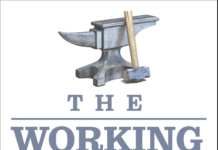
Greenpeace is raising red flags that the agriculture industry, New Zealand’s biggest emitter, could escape being held responsible for nearly half of the country’s climate emissions under the proposed Zero Carbon Act.
The Act was launched today for public consultation, and outlines three potential pathways to reach “net zero” by 2050. One of the options would see agricultural emissions – which account for 49% of all New Zealand’s emissions – being ignored.
Greenpeace climate campaigner, Kate Simcock, says the Labour-led Coalition must legislate a target of zero emissions by 2050 at the very latest, and one that includes all sectors and all emissions.
“Anything that neglects to include half of the country’s climate pollution would not be taking collective responsibility for climate change – a global challenge that effects everyone,” she says.
“It is no surprise that the dairy industry want to keep their gases out of the Act – they are the worst industry for avoiding responsibility for emissions. As the single biggest emitting industry in the country, it would be a travesty to exclude dairy and agricultural gases like methane, which make up half of New Zealand’s total emissions.”
The Zero Carbon Act Discussion Document leaves open the question of whether the 2050 net zero target should include all greenhouse gases (including methane and nitrous oxide), or only carbon dioxide. It also questions whether we can meet our commitments by buying carbon credits on the international market instead of reducing our own domestic emissions, and whether a fixed target should be legislated or left to the Climate Commission to decide.
Simcock says without including agricultural emissions, and banning international carbon credits from being purchased instead of actively reducing New Zealand’s emissions, the Zero Carbon Act would be a much weaker climate commitment than what has been promised.
“We’ve told the world we’re going to be leaders on climate change. That means we have to be all in and as ambitious as we can,” she says.
“If we were competing in the Olympics, we’d be aiming for gold, not bronze. We need to do the same in the race to save the planet. Climate change is the greatest threat facing humanity, and we can’t claim climate leadership by polluting and buying our way out of it.”





Here is the answer, as Simon Bridges today says he will scrap the fuel taxes and build only roads and drill for oil & gas as his answer.
Our response is as follows here;
To act to carry out our pledge;
Protecting our environment & health.
In association with other Community Groups, and all Government Agencies since 2001.- Citizens Environmental Advocacy Centre.
Public submission – Zero carbon bill – submission & on the re-opening of the Napier – Wairoa – Gisborne rail services.
11th June 2018.
Subject; public community submission to; https://beehive.govt.nz/speech/zero-carbon-bill-consultation-launch Introducing the Zero Carbon Bill – June 2018 James Shaw. – Climate change minister.
Point 1/
Please re-introduce and incorporate MP Pete Hodgson’s “National Rail Strategy” as part of his climate change policy he produced as the former Minister of Transport and “Ministerial group on Climate change” under the previous Helen Clark Government.
https://www.parliament.nz/en/mps-and-electorates/former-members-of-parliament/hodgson-pete/
• Minister of Research, Science and Technology: 10 December 1999 – 21 December 2004
• Associate Minister for Industry and Regional Development: 10 December 1999 – 19 October 2005
• Convenor, Ministerial Group on Climate Change: 14 August 2002 – 19 October 2005
• Associate Minister of Foreign Affairs and Trade: 13 November 2000 – 26 February 2004
• Acting Minister of the Environment: 23 February 2001 – 27 March 2001
Pete Hodgson produced the excellent policy of using rail under the “National Rail strategy” – 2005 “To ensure environmental sustainability”.
• Here is the references in this document from the Ministry of Transport.
• https://www.transport.govt.nz/assets/Import/Documents/nationalrailstrategy.pdf
Quote;
Pete Hodgson’s forward in this “ National Rail Strategy” policy paper;
National Rail Strategy to 2015 May 2005 ISBN 0-478-10005-1
“ It is my pleasure to present the Government’s new National Rail Strategy.
When this Government came to office in 1999, we had already made a very firm commitment to give clear directions to the New Zealand transport system that would reflect the realities we shall face in the 21st century.
This commitment led to the New Zealand Transport Strategy being released in December 2002.
The New Zealand Transport Strategy states that ‘by 2010 New Zealand will have an affordable, integrated, safe, responsive, and sustainable transport system’.
To achieve this we have set five objectives, all equally important:
• To assist economic development
• To assist safety and personal security
• To improve access and mobility
• To protect and promote public health
• To ensure environmental sustainability
Another driver of this process has been the Kyoto Protocol, which the Government agreed to ratify three years ago, and which came into force in February 2005.
In order to meet our protocol commitments we shall need to focus on reducing transport energy use in particular.
Under the right conditions, rail is a very energy-efficient transporter of both passengers and freight, and we look forward to seeing better use of New Zealand’s rail network.
Now we have brought New Zealand’s rail infrastructure back into public ownership, and the vision and objectives of the New Zealand Transport Strategy will be applied to New Zealand’s railway network.
Through the National Rail Strategy, the Government is demonstrating its commitment to retaining the existing network; to investigating the development of a number of new railway lines; and to maximising the use of rail transport.
The aim is to move people out of cars for urban journeys, and freight off roads, wherever possible.
For freight this means a focus on bulk or containerised loads, including traffic such as milk or logs. For passengers it means a focus on busy urban corridors in the larger centres, and using smart thinking to manage congestion.
This is an exciting time in New Zealand transport, with a dynamic vision beginning to achieve real results, working towards an affordable, integrated, safe, responsive, and sustainable transport system.
The Labour Progressive government acknowledges the contribution of the Green Party to the development of this Strategy, and both the Green Party and the United Party’s support of the government’s transport policy.”
Hon Pete Hodgson Minister of Transport
End – of quote;
Pete Hodgson refers to the transport emissions as being a major issue, and that half of our climate change emissions come from transport (over 46%).
Pete Hodgson produced a ‘dedicated rail policy’ to lower the increasing transport emissions.
By reducing road freight use was a positive goal, as road freight uses over five times the energy to transport the same amount of freight as rail does per tonne per km.
Point 2/
http://www.kiwirail.co.nz/uploads/Publications/The%20Value%20of%20the%20Rail%20in%20New%20Zealand.pdf
This year in February 2018 the new Labour coalition Government revealed a hidden recently discovered important rail policy document that the last government produced under National’s Bill English in 2017 but failed to release.
http://www.kiwirail.co.nz/uploads/Publications/The%20Value%20of%20the%20Rail%20in%20New%20Zealand.pdf
But this vitally important rail policy document was never released, under the last National Government, and should now be used also as the report clearly showed that Rail in NZ was of a great economic and environmental benefit that saved $1.5 Billion Dolllars per year already and there is potential that using far more rail will benefit our climate and environment and economy if used in a more regional planned policy.
4.3
Safety benefits Another important benefit of rail is the safety benefits of moving both freight and passengers by rail instead of roads. The safety benefit of rail is estimated to be approximately $68.78m to $60.21m. This study has calculated benefits by transferring rail passengers and freight to light vehicles and trucks and applying factors from Ministry of Transport (MoT) to estimate the extra safety incident costs and subtracting the costs of existing safety incidents on the rail network. This represents the avoided safety cost of the rail network. The net safety benefit (avoided cost) of passenger rail is $8.28m to $3.97m and for freight rail it is $60.50m to $56.24m, even though the number of incidents is similar showing that transporting goods using heavy vehicles is more dangerous than rail.
4.4
Emissions benefits The total emission cost figure represents avoided costs from transporting freight and passengers by rail and hence for this study it also represents the value of emission benefits. The estimated extra avoided cost (therefore benefits) of emissions created from moving Auckland and Wellington rail passengers and rail freight to road is $9.27m to $8.45m. This is a net figure and the emission savings arising from discontinued use of freight trains locomotives have been subtracted from the gross total. A modest proportion of the emission benefits is from the transfer of passenger services from road to rail with the largest amount of this net extra avoided cost arising from rail freight.
https://beehive.govt.nz/speech/zero-carbon-bill-consultation-launch
Warmest regards,
Secretary,
Citizens Environmental Advocacy Centre.
Comments are closed.